A helicopter and drone successfully operated as a team whilst airborne say Qinetiq.
The drone switches between independent and human-controlled reconnaissance according to Helicopter operator’s commands.
“The demonstration took place on 19 June over the army ranges on Salisbury Plain, Wiltshire, in the UK and featured a manned helicopter and a semi-autonomous drone, working together to identify potential targets in a designated area. An operator on board the helicopter was able to switch between monitoring the images sent back by the drone’s cameras and allowing it to operate independently, searching for and identifying potential targets itself, only alerting the operator when a decision was required.
This work is funded by Army HQ Research and Experimentation using the Defence and Security Accelerator (DASA) competition framework and will be delivered by Defence Science and Technology Laboratory (Dstl) to the British Army in September as part of the Army Warfighting Experiment 2019 (AWE19). The success of the demonstration was particularly impressive given it was delivered during a period of significant constraints due to the Covid-19 pandemic.”
There have been several demonstrations of airborne manned/unmanned teams in other countries but the UK’s first successful demonstration is notable for the following three reasons say the firm:
1. The entire process was controlled through a point and click interface on a portable tablet on board a standard H125 helicopter. This indicates that very little modification is required to a host aircraft to make an airborne manned/unmanned team work effectively. It suggests how easy it could be to build such a team around any manned aircraft.
2. The manned/unmanned team was created using a range of different technologies from different suppliers. To date, most demonstrations have used products from a single company, so they are designed from the outset to work together as a connected system. QinetiQ’s demonstration used equipment and machines that were not designed specifically to work with each other, showing a more open and technology agnostic approach to manned/unmanned teams is possible. This increases the options for defence and security customers and potentially offers a faster and lower cost path to a teaming capability.
3. The demonstration involved the successful passing of control between different human operators. Control of the drone was moved from one person to another securely and effectively throughout the trial. Not only does this ensure an unmanned drone can always be controlled by the person best placed to make decisions, it also paves the way for a more collaborative approach to using defence assets. Defence and security organisations are both seeing a greater need to collaborate between sovereign forces and between nations to address common threats from unpredictable adversaries. Being able to easily share equipment and seamlessly move control of assets from one trusted party to another could make it easier for countries to work together using a single pool of assets. Ultimately this reduces cost and increases agility.
Major Ben (name withheld for security reasons according to Qinetiq), a British Army pilot working with Dstl said:
“We’ve been following QinetiQ’s progress as it prepared the system and seeing it in action, we believe this could be a game-changer for us. The ability to use a manned/unmanned with any manned helicopter in the UK fleet has huge potential. We can’t wait to get our hands on the system and put it through its paces during AWE19.”


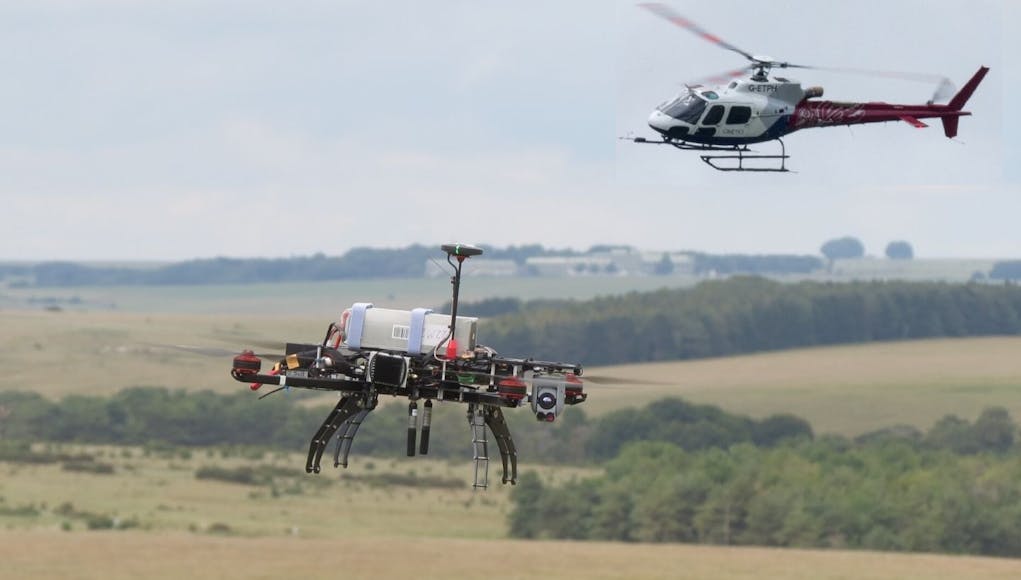
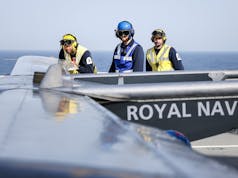
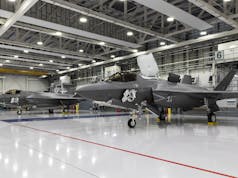
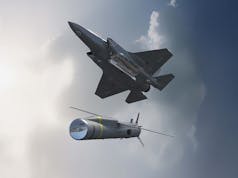

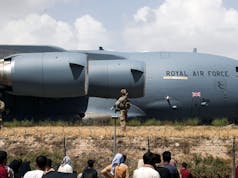

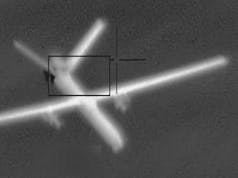

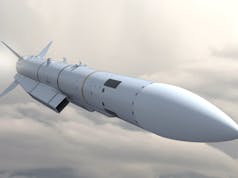
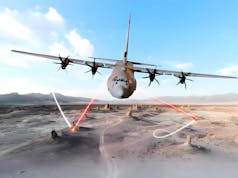

Strange that, you hang around for ages waiting for a drone to turn up, then two do at the same time!
Like articles here. Nothing for days and now, what, 6 or something?
No, 9!
Welcome back George!
Very funny……it is worth the wait though, and yet again it proves that we’re ahead of the pack with our incredible military technology. If we had funding on the scale of the United States, well…….who knows where we could be??
Reading those supposed advantages I couldn’t quite get the blue screen of death out of my mind, brings a whole new meaning to a system crash I guess.
However more importantly perhaps I wonder what implications for system security that holds, as in the civilian world at least, that suggests to me a decided potential weakening of security in accommodating or uniting unrelated interfaces and/or architectures in persuit of that desirable flexibility, especially as things get far more complex as this sort of technology will, if it is to becone truly useful on the battlefield. The vivid track and trace app that was trying a not disimilar approach proved unworkable in practice and replaced by a more restrictive and admittedly less flexible software approach. For a military application of this nature one has to ask how they ensure such a relative open architecture approach with more flexible input/output isn’t by its very nature more open to external penetration in real world scenarions exploiting those hooks. At this point I suspect they are more rapturous at actually making it all work together and that certainly is impressive if it does prove reliable. But too often this stage proves to be the easy bit in hi tech programs.
As a reminder and warning perhaps about taking a wrong, if enticing path just been reading up on the Voodoo strike fighter and it’s proposed very clever flexible modular weapon system designed to be fully intechangable in carrying mixtures of new gen nuclear warhead, fuel and electronics to best fit its mission profile, it was to be a game. changer. Great concept, but never worked together when realistically tested together in practice, due to fundamental miscalculations around the aerodynamics of one upon the other that restricted range and damaged flight characteristics and pilot comfort hardly ideal for an aircraft of its role. As a result you had a fundamentally useless aircraft in the role to which it was designed only usable with an existing smaller weapon deemed approaching obsolescence. Seamless interaction is a necessity not just preferable in these complex systems. Let’s hope this approach works better as its pushed to its useful limits or otherwise like Windows Ten everywhere’ it will prove in its mobile version endlessly delayed and fundamentally obsolete before it ever does what’s promised while the products its designed for never get a finished up to date version and end up on the scrap heap while bits are used as a service on an alternative architecture altogether.
George must have been busy!
As mentioned in another thread, I was wondering when new articles would appear
And Daniele has taken the words out of my mouth haha
Plenty to look into and discuss.